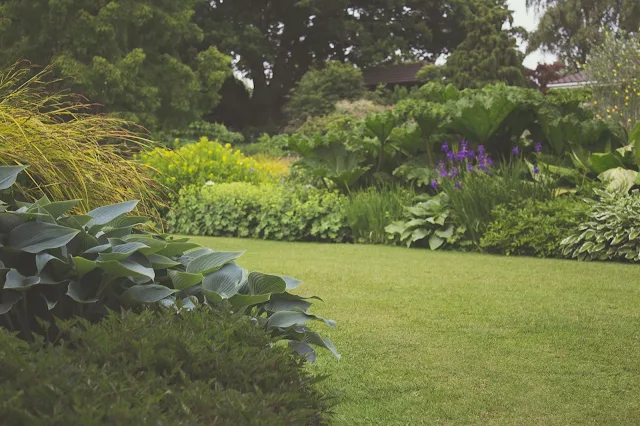The annual ritual behind successfully maintaining a healthy lawn has challenged home and business property owners since the first grass field was seeded. Over time, approaches to keeping yards and commercial fields healthy have varied as turf-science concepts and grass types evolved. The plant zone you live in can dictate grass choice and care, as well. Taking into account these factors, follow these basic lawn-care tips to manage and maintain a healthy parcel of turf.
Seed Right
It is important to respect your region by making certain the seeds or sod you lay down are a match. If you plant cool-season grass where temperatures climb to excess, for example, you are at a disadvantage from the start. In that case, blades will attain only shallow roots, attract insects, come down with disease or develop a brown, withered appearance.
Provide Food and Water
You must feed a lawn at the start and at times during the year. Provide nutrients by applying slow-release fertilizer. Even better, recycle grass clippings by using a mower with a mulching blade. Water appropriately by saturating the yard only every other day, but for a longer soaking period. An automatic Denver Sprinkler system ensures that the water penetrates deeply into the soil. Feeding and watering as described leads roots to reach deep into the ground for a more sustainable lawn.
Aerate and Dethatch
Water and nutrients work best when air becomes part of the mix. Lawn aeration should be done annually; core aeration, where plugs of soil are professionally removed, creates openings, or tunnels, for oxygen to enter. This process also helps reduce pockets of hardened soil that develop over time.
Dethatching also aids in airing out a lawn. Thatch is the buildup of dead matter over the roots, including some of the grass clippings left behind for nutrition – leading to brown patches and spotty growth. Weeds love this build-up, while grass struggles under it. After removing this matter with a dethatching tool, your lawn will breathe a sigh of relief.
Seed and Weed
No matter the care you put into a lawn, weeds and bare areas will appear. For weeds, try to avoid harsh chemicals unless the growth is out-of-control. Adjust the mower to a proper height so grass grows tall enough to block out some weeds. Seed the brown spots in the fall when weeds are at a minimum, and when new growth can put down roots under cooler conditions.
Lawns do poorly when neglected. While a green thumb is not necessary for solid growth, routine care will encourage a verdant carpet rather than a weedy jungle.








0 Comments